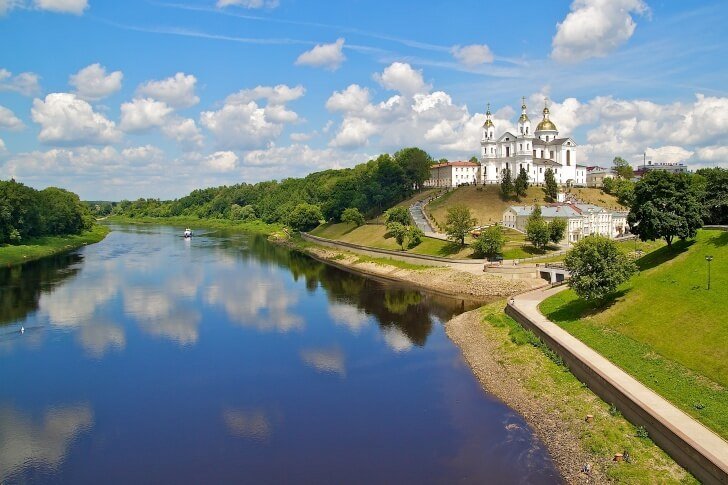When you come to Vitebsk, you immediately catch this strange feeling - on the one hand, it seems as if you are at home, and on the other, somewhere in the vastness of Central Europe. This is not surprising, because the city belonged to the Grand Duchy of Lithuania and the Commonwealth for quite a long time. Only from the end of the 18th century did it become part of the Russian Empire, and already in modern times it became part of independent Belarus.
Unfortunately, many temples - priceless architectural monuments - were destroyed during the Soviet era. But tourists can still admire the beautiful Vilna baroque, as some of them have been restored in their historical appearance. Also, travelers are waiting for picturesque streets, wide squares, interesting museums and elegant city estates.
What to see and where to go in Vitebsk?
The most interesting and beautiful places for walking. Photos and a short description.
- Slavianski Bazaar in Vitebsk
- Assumption Cathedral
- Town hall
- Suvorov street
- Square of victory
- Resurrection Church
- Church of St. Barbara
- Church of the Annunciation
- House Museum of Marc Chagall
- Museum of the History of Vitebsk Tram
- Art Museum
- Museum-estate of I. E. Repin Zdravnevo
- Theater named after Yakub Kolas
- Belarusian theater Lyalka
- Governor's Palace
- Dukhovskoy kruglik
- Pushkin bridge
- Botanical Garden
- Frunze Park
- Western Dvina River
"Slavianski Bazaar in Vitebsk"
An international festival organized with the aim of rapprochement and uniting culturally close countries (mainly the former republics of the USSR and the Warsaw Pact member states). It has been held since 1992. Concerts, competitions with cash prizes, performances and various exhibitions are held at numerous venues of the event.
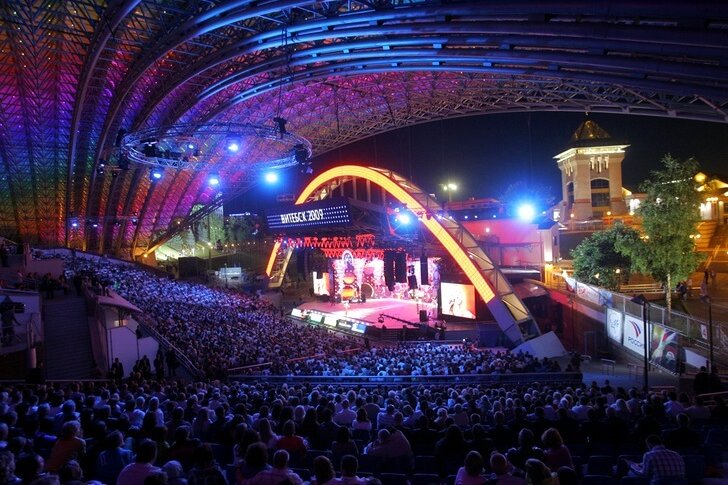
Assumption Cathedral
An Orthodox church, the first mention of which is found in documents from the beginning of the 15th century. It is known that in the XVIII century the next building of the cathedral was built as a Uniate church. In the 1930s, the building was blown up. A new temple on this site was built in 2011 in the Vilna Baroque style - an architectural style that became widespread on the territory of the Commonwealth at the end of the existence of this state.

town hall
City government building in the historical center of Vitebsk, built in 1775. The first town hall existed in the city since 1597, when it was under the Magdeburg law system. The building was built in the Baroque style. Today, its territory houses the Vitebsk Museum of Local Lore, which exhibits unique exhibits of the 13th-19th centuries, including birch bark, elements of a knight's costume, weapons and local embroidery.
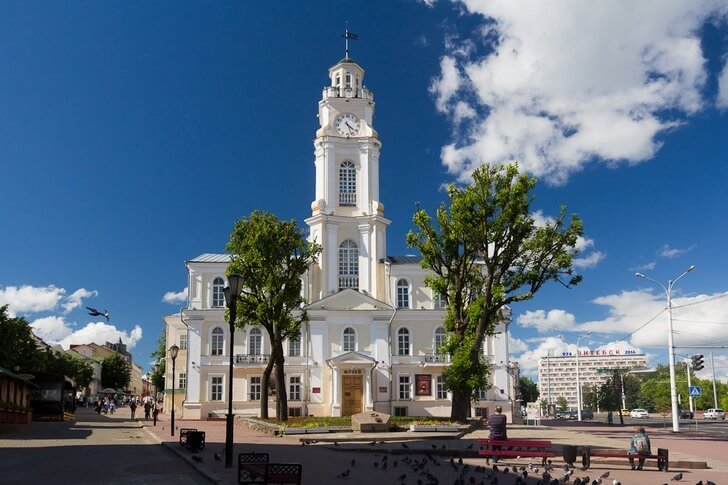
Suvorov street
One of the central city streets, named after the famous Russian commander. Its length is about 1.3 km. The alley has existed since the 14th century, until the beginning of the 20th century it changed its name several times. Buildings of the 19th century are almost completely preserved on Suvorov Street, there are even unique buildings of the 18th century. One of its sections in the vicinity of the intersection with Uritskogo street is paved with tiles and is pedestrian.

Square of victory
The largest square in the city and in the country. It is 380 meters long and 190 meters wide. The territory is surrounded mainly by buildings dating back to the 1960s and 70s, which have been preserved since the Soviet era. In 1974, a memorial complex was erected here in honor of the soldiers, partisans and fighters of the Vitebsk underground, who bravely fought the enemy during the Second World War. The monument is made in the form of three bayonets piercing the sky.

Resurrection Church
A new Orthodox church built in 2009 on the site of an 18th-century church destroyed in 1936. The building was erected in the Vilna Baroque style, it is a single-nave structure with two towers on the facade. Next to it is a bronze monument to the Lithuanian prince Olgerd, during which Vitebsk acquired additional defensive structures.

Church of St. Barbara
The Catholic Cathedral of 1785, rebuilt in 1885 in the Neo-Romanesque style. Until recently, it served as the cathedral church of the Vitebsk diocese (eparchy). The church was not destroyed during the Soviet period, like other religious institutions. Its premises were used as warehouses for a long time, so the building fell into disrepair. Restoration work began in the late 1980s.

Church of the Annunciation
The first Church of the Annunciation was erected in the 14th century (some sources claim that it was built in the 10th century). The unique architectural monument was not destined to survive to this day: first, the building was badly damaged during the Second World War, then in the 1960s it was blown up to lay tram tracks on this site. The temple was restored in the 1990s in its original historical appearance.

House Museum of Marc Chagall
The exhibition complex, consisting of the memorial house-museum of M. Z. Chagall, where the artist spent his youthful years, and the art center named after him, on the territory of which exhibitions of his works are held. The museum started operating in 1997. Here you can see things that belonged to the master's family and himself, as well as archival documents. To get the most complete picture of the exhibition, it is better to use the services of a guide.
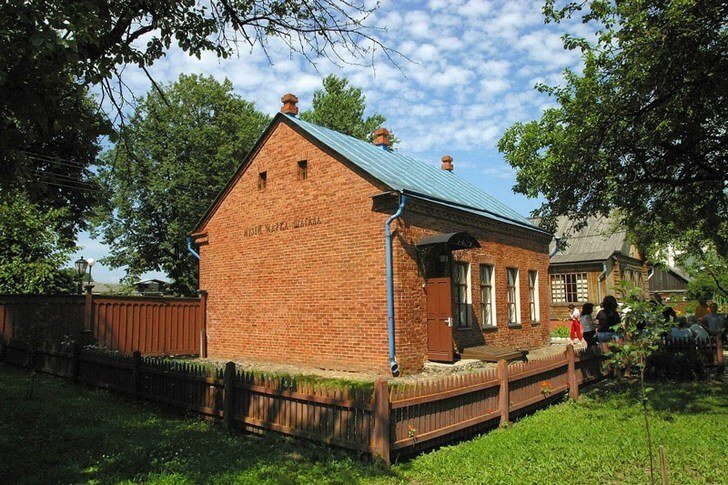
Museum of the History of Vitebsk Tram
The exposition started operating in 1996 on the territory of the city tram depot on the initiative of trade union members. The museum staff did a great job, carefully collecting materials and exhibits for the future collection related to the operation of the tram line. Here you can see not only documents and photographs, but also models of wagons, real bags of conductors, old tickets, cash registers and other interesting exhibits.
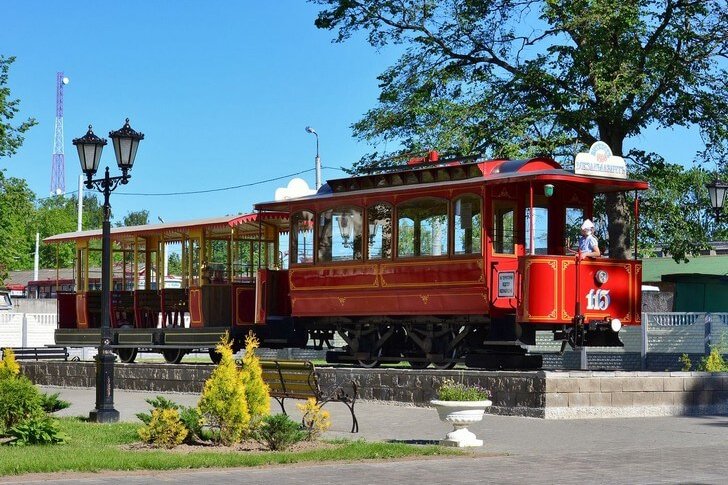
Art Museum
The Art Gallery is a branch of the Vitebsk Regional Museum of Local Lore. It was opened in 1992 in a building built in 1883, built in the style of late classicism, designed by A. S. Kaminsky. Until 1917, a court was located on its territory, after - the Revolutionary Committee and the administrative body of the Communist Party. The exposition of the museum consists of collections of Belarusian art, Russian painting and works of local artists.

Museum-estate of I. E. Repin "Zdravnevo"
The museum was founded in 1988 on the site of the lost mansion of the artist I. E. Repin. It is located approximately 15 km. from Vitebsk in the northeast direction. The complex consists of a newly recreated owner's house, where the main exposition is located, the manager's wing, office space and a cellar. On the territory of the estate, a linden alley with trees, which were planted by the master himself, has been preserved.
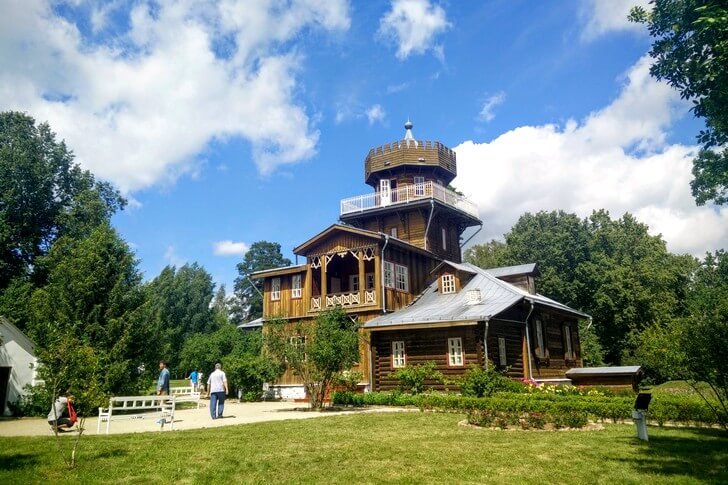
Theater named after Yakub Kolas
The history of the theater has almost a hundred years. There are performances by classical and contemporary authors, but preference is given to Belarusian playwrights. To date, the stage has three areas: a large, experimental and small living room. The theater building is located on the banks of the Western Dvina. It was built in the 1950s in a classical style. The stage received its modern name in 1944 in honor of the national poet Yakub Kolas.
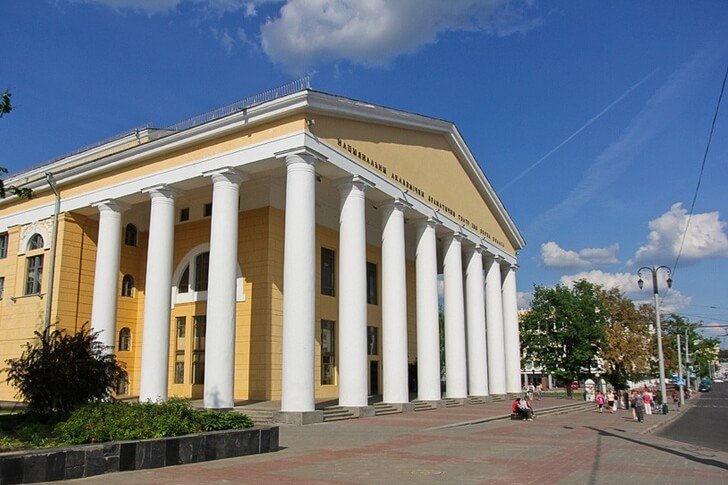
Belarusian theater "Lyalka"
Puppet theater, founded in 1990 on the basis of a troupe that performed at the theater. Yakub Kolas since 1985. The stage is located in a building from the beginning of the 20th century, which was recognized as an architectural monument. Initially, it was planned to be used to house the Commercial School, however, with the outbreak of the First World War, it was adapted for a hospital. Later, administrative offices were located here.
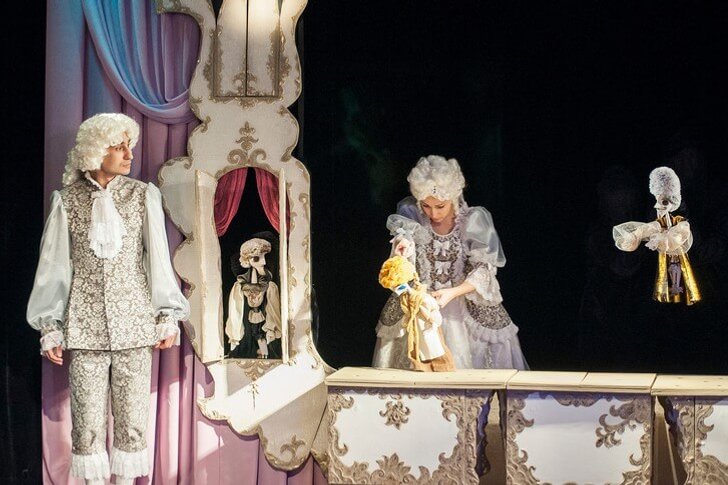
Governor's Palace
The building is one of the main city attractions. It was erected at the end of the 18th century. Since 1806 it has become the governor's residence. In the 19th century, the mansion was significantly expanded by adding a new two-story building to it. The building is an example of a solemn classical style with modern elements. The mansion was partially damaged during the Second World War, but it was restored quickly enough.

Dukhovskoy kruglik
Reconstruction of one of the towers of the Lower Castle, which existed in Vitebsk in the Middle Ages. The building was built in 2007. Today, the circle houses a museum that tells about the history of the fortress, an observation deck and an exposition dedicated to the Slavianski Bazaar in Vitebsk festival. The lost original tower was built in the 14th century on the initiative of Prince Olgerd.
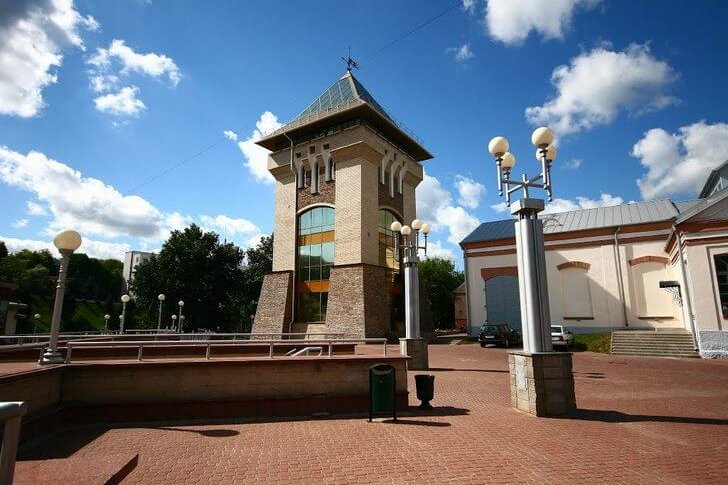
Pushkin bridge
The bridge is located in the central part of the city, it connects the banks of the Vitba River. The crossing was built in 1961 on the site of an old wooden bridge of the 19th century, which quickly fell into disrepair. In 2010, the asphalt pavement was replaced with tiles, the railings were changed, evening decorative lighting was installed, and traffic was banned, thereby turning the passage into a pedestrian zone.

Botanical Garden
The city botanical garden has existed since the 18th century. It was specially broken for students to study the properties of plants. Due to the favorable location near the river, many representatives of the flora were able to take root here. During the Second World War, there were battles right on the territory of the garden, so all the plantings were lost. Later they were completely restored. Today the nursery is run by Vitebsk University.

Frunze Park
The park is located in the center of Vitebsk on the banks of the river, its total area is 15 hectares. On its territory such species as poplar, birch, willow, maple, acacia, ash and other species grow. In the center there is a concert hall, to which the bridge of the 1000th anniversary of Vitebsk leads. The park was founded in the 19th century as a garden at the bishop's house. After 1917, it was opened for public access, and in 1926 it was renamed in honor of M.V. Frunze.
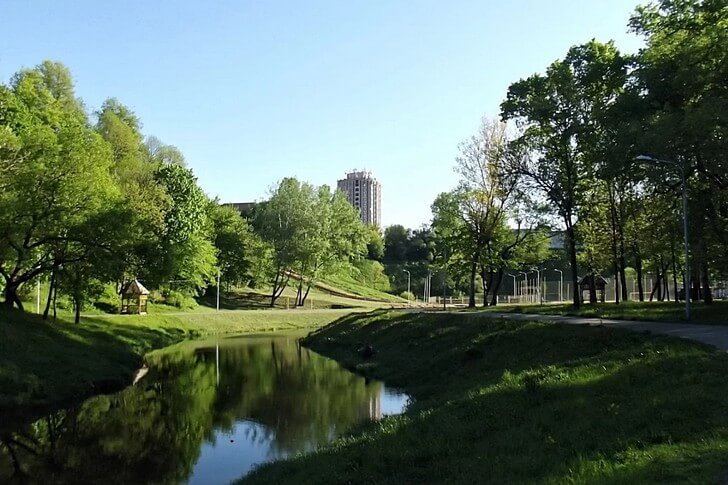
Western Dvina River
The Western Dvina flows through the territory of three states: Belarus, Latvia and Russia. Its length is more than 1000 km. The water artery passes through Vitebsk, forming a horseshoe-shaped arc. For some types of ships, it is navigable; the city has a river port for such ships. The length of the banks of the Western Dvina included in the city limits from different sides of the channel ranges from 13 to 17 km.
